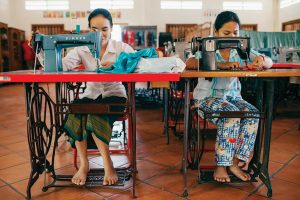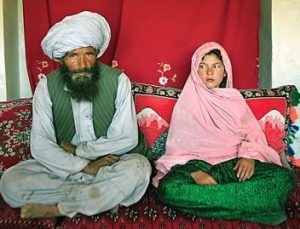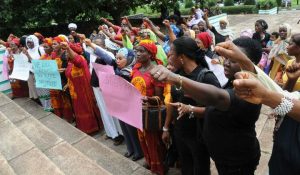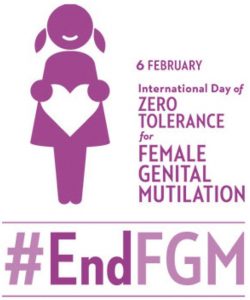This could be a useful site for some of your research papers. http://www.womanstats.org/maps.html
Author: Susan Pearce
Unraveling the Somaly Mam Controversy

Our group has just read and discussed, The Road of Lost Innocence, by Somaly Mam and examined the controversy surrounding her life story and work with AFESIP to help Cambodian victims of sex trafficking. A number of journalists maintained that she fabricated some of the events told in her life story to fit Western stereotypes of a deserving hero; other investigators suggest that journalists got it wrong and find corroboration for the controversial parts of her story. Some criticized her for using children to raise funds by making their stories worse than they were and getting them to conform to “victim scrips,” in order to evoke pity and sympathy from donors. No one questions that the foundation did good work but there are concerns that some of the funds were misused or not accounted for accurately. Mam continues her work and to pursue her goal of rescuing and rehabilitating girls but critics want her to instead address the “market driven” forces and structural socio-economic preconditions behind the expansion of the Cambodian sex industry. What do you think? How do we find the “truth” of this situation when the media extolls a saint and then destroys her for not living up to the stereotype but when there is evidence that stories were exaggerated or fabricated to appeal to donors? Should outsiders direct the mission of the charity or is dissolving it altogether the way to go? How do those of us with the best of intentions genuinely help others without falling into the trap of idealizing our own views of who is most worthy of our aid?
How I answer the question “what are you?”
This is me, brown eyes, light skin and curly hair. To those I call my people, I look like them and to those who don’t know me, I look ambiguous.
I’ve been working as a waitress for quite some time now and I meet lots of people throughout my week. Since my first week, I’ve been asked the questions “what are you” or “oh you speak Spanish, what are you mixed with” more times that I have cared to count. When people ask me these questions I often want to reply by saying “I’m Spanish” but I know from experience that this is not the answer that they are looking for. The times I have answered with “I’m just Spanish” I receive a look of disbelief that is often followed by comments like “but you don’t look Spanish” or “your hair is so curly” which I sometimes find offensive because not all Spanish speaking people look the same.
I find myself explaining my heritage to random strangers at least five times during the week. I tell people that I am Afro-Caribbean, that my heritage is African, Spanish and Taino and that my looks are the result of years of ethnic groups being mixed together.
Here is the thing though, no matter how many times I get asked those questions or someone mistakes me for being mix with African American and White, I don’t get annoyed or frustrated at them. I look at it as an opportunity to educate people on Latin heritage and why we all look so different. I also don’t mind being confused for biracial because at the end of the day that is exactly who I am. It doesn’t really matter that my biracial happened many generations ago, I’m still the child of different ethnic groups and I love every ounce it.
Leangei Gomez
The Bible’s #MeToo Problem
This is written by a pastor, who is asking about the stories of women in the Bible who experienced sexual assaults.
Op-ed: Protesting India’s Inadequate Rape Laws
Savannah Bynum

The fundamental issues in India can be found in their outdated laws pertaining to what constitutes rape. Rape in India is defined as “penile penetration into the vagina,” which entails that only a man can be the perpetrator and only a woman can be the victim. The Indian Penal Code of 1860, with slight but not overwhelming alterations and updates, solidifies the concept of a gender inequality in Indian law. The pronouns used are female focused and thus enforce only a female victim and assume only a male perpetrator. The laws in place are faulty and provide legal loopholes to be exploited resulting in increasing outrage about the lack of enforcement for crimes of rape in India. It is imperative to shed a light on the atrocities being committed by utilizing contemporary court cases and public reactions in hopes that the pressure will cause the Indian courts and political officials to address and revise these outdated laws.
Conversations have to start somewhere, and in the case of India, the conversation can be seen visually over social media. Following a gang rape and eventual death of a 23 year-old female in Delhi, research was done based on the utilization and implementation of social media as the event and case unfolded. Journalists found that twitter served a helpful role in bridging contact between journalist and urban middle class public who were concerned about the incident and desired to know what transpired
This is a sensitive topic for everyone. It is said, statistically, in India there is a rape reported every 15 minutes, but that is only counting those who report what they have been through, not those who may stay silent. Only 1% of sexual violence is accounted for and reported to the police. And only 10% of married women reported sexual violence, even though it is known that rates of marital rape are much higher.
In Mumbai, India, the rape of a 22-year old woman by five men who claimed to “be on a hunt for a beautiful deer,” galvanized public opinion and outrage. The case was heard in 2023 and caused an uproar within the city about their rape laws. The woman was asked to re-enact a pornographic act that was shown to her on a cell phone by one of the men. This was not the first time these men had done this to a young woman, but none of the victims had ever gone to the police before. This case shows the acts of bored men who seemed to have routinely committed rapes in the same area. Yet nothing had been done to stop them. The seriousness of this kind of crime did not sink in until this case made headlines. Previously, few rape cases were prosecuted and when they were, the perpetrators were seldom punished. For that reason, victims were hesitant to come forward or speak out.In the wake of this case, India did enact changes to their rape laws passing numerous legislative reforms, commonly known as the Nirbhaya Act. The act saw increased penalties for sexual violence, including extending the length of prison sentences and introducing the death penalty in certain cases.
Yet even with the new laws, rapes continued to occur and often the perpetrators were not arrested or prosecuted. But there are multiple cases similar to the one just spoken of, they are not limited to “civilians” and can happen “under the protection” of the police, who have the duty to serve and protect these people. However in most cases this is far from true. For example, a woman in 1972 a woman was raped by drunken police officers while in their custody. This case helped start protests by women in India with support from both male and female experts to demand changes in the government. The latest data from India’s National Crime Record Bureau show around 100 alleged attacks are reported to police each day, or nearly 39,000 in 2016 — a 12% increase from the previous year
Most recently, a young girl aged 16 was kidnapped, taken to a Hindu temple, imprisoned and held captive while she was repeatedly raped by a number of men, one of whom was an elected official. Eight men have been arrested and the outrage is mounting in India over this case. Last week in April of 2018, thousands of women protested in several major Indian cities. Swati Maliwal, chairwoman of the Delhi Women’s Commission (NWC), is staging an indefinite hunger strike to push for stricter laws for rape in India, including the death penalty. It is important for all of us to support the women of India in this fight against rape and all forms of violence against women.
Savannah Bynum studied at Catawba valley community college, and is now completing an anthropology major with a minor in art history at East Carolina University.
Child Marriage in Afghanistan
By Asha Allamby

Soon to be wed Faiz Mohammed, 40, and Ghulam Haider 11, Ghowr Province, Afghanistan. (Photo by Stephanie Sinclair)
Beaten, molested, and imprisoned. These are just a few of the consequences that are all too familiar among child brides in Afghanistan. The majority of these girls have been married off before they are legally able to do so, as was the case with Ghulam Haider pictured above. The combination of poverty and limited education are just a few factors driving the high rates of child marriage in Afghanistan.
Child marriages continue to thrive in developing countries in the African and Southeast Asian regions of the world. Despite efforts from Afghanistan’s government to establish a legal age at which girls can marry, the tradition of child marriages continues to flourish. A girl may be married off young due to costs of bride price, dowry or to settle a blood feud. After decades of war, many Afghanistan families find themselves severely impoverished and feel that their daughters are a financial burden. They may choose to marry them off young to receive a bride price or to pay a low dowry to the groom and his family. Some families cannot afford a dowry so they exchange young female members of the family in an act known as badal. Lastly, when girls are given to other families to settle a dispute, the act is known as baad. This is considered one of the most abusive customs towards young girls. In- laws take out anger on the young bride because she is a constant reminder of a family member they lost.
One of the major hurdles in tackling child marriage in Afghanistan is attempting to close the loopholes around the age for which a child can marry. The laws currently allow a girl to get married as young as 15 with parental consent. Even so, how is it possible most girls get married before the age of 15?
Afghanistan is considered an Islamic state meaning it the government is influenced by Islam. In the Quran, Islam’s religious text, a child is suitable to marry after her first menstruation. The problem arises when a girl as young as 9 has her first menstruation. She is then considered old enough to marry, even to someone old enough to be her father.
Unfortunately, data on child brides can sometimes be hard to retrieve as marriages do not have to be registered to the state in Afghanistan. Nevertheless, 40 percent of girls are married between the ages of 10 and 14. In extreme cases, they were married to someone 50 years older. Once married, child brides often become victims of domestic violence from their spouses and in-laws. They are beaten, raped, neglected and subjected to servitude. If they run away, they may be subjected to imprisonment. Each year 2,400 women turn to self- immolation to escape their abusive husbands. Child brides have profound impacts on their health physically, sexually and psychologically. Child marriage is a clear violation of human rights.
Because Afghanistan is a patriarchal society, men dominate every aspect of women’s lives. This results in child brides not being able to finish their educations. They are cut out of the public sphere and socializing with people their own age. Men, whether their husbands, brothers, or fathers, determine if a child will receive adequate health care during the time of child birth. A girl’s lack of access to health care is particularly alarming during child birth because she is five times more likely to die if she gives birth before she is 15 years old. Child marriages and reduced access to health services has a direct link to the child being malnourished or premature.
One solution to ending the child bride epidemic would be to identify where girls are more at risk of being forced in child marriages so that prevention programs could be started. Additionally, it is imperative that Afghanistan’s government and religious leaders condemn the practice. Child marriage is also continuing to be a viewed as a women’s issue, deterring men from stopping the practice. Men and women alike must be educated about the harm of child marriages. There are currently two organizations dedicated to fighting against forced child marriage. One is Save Your Rights (http://www.saveyourrights.org ), which works internationally, and Women for Afghan Women (http://www.womenforafghanwomen.org), which works on a broad agenda of women’s rights within Afghanistan. Check them out if you want to get involved.
Asha Allamby is a graduating senior at East Carolina University with a major in International Studies and a minor in Ethnic Studies and Sociology. She intends to get her MS in Social Work so she can further assist disadvantaged minority populations in the U.S and abroad
Southern Africa’s Contraceptive Control
Abigail Detwiller
Puberty is a crucial step as girls prepare for the decisions and responsibilities of sexuality and reproduction.
Faridah Nalubega, a 26 year-old woman intended to have just two or three children, the most she felt she could afford by selling fried fish in Kampala, Uganda, according to PAI, a U.S.-based family-planning advocacy group. But she ended up with six children—in large part, she told PAI, because her husband forbade her to use contraceptive pills and her local family-planning clinic offered no suitable alternative. In this area of Uganda, men often become violent with their partners who show an interest in using contraception.
Two barriers that limit the access to and use of contraceptives is southern Africa are the myths and misconceptions of young people, and the attitudes of adults in these communities. If these can change then the use of contraceptives will increase and the number of unwanted pregnancies will decrease. The first step would be to expand the learning and accessibility of information on the many different methods of contraceptives. The young people need to understand that the myths and misconceptions that they are taught by their peers and adults are incorrect and hold no scientific grounds. If they could meet others who use contraception and ask questions it could be a very good experience for the youth, and for the adults who have the misconceptions. It is one thing to be able to reach the youth, but if you do not change the view ofthe adults have then all the work you did can be easily reversed because of the place they hold in their society over the younger generations. After being able to teach and give more factual based information on contraception they would need to focus more of their time focused on the older generation. If the older generation views contraceptives as bad and refuse to provide the youth with them then all the work teaching the youths would be of no use. The youth would not be able to get the contraceptives so their knowledge would be no help because without contraception’s no matter what they try it will be unsuccessful. Young people are seen by societies around the world as needing to be guided by the older generations to make sure they are not making immature decisions. Though sometimes the problem stems from the older generations decisions that are being forced upon the youth.
In South Africa the traditional view against contraceptive use is held by the men, so if a man does not want his wife on contraceptives then she cannot unless she hides it. Engelman writes that “unfortunately, helping women plan their families stealthily—by using contraceptive injections, for example—is a leading strategy because many male partners believe childbearing decisions are theirs alone to make. Men also tend to want one to three more children than women do, not surprising given who gets pregnant, gives birth and handles most of the child care.” Traditional values are taught to the next generation through multiple ways, but some traditional values are oppressive towards others and should not be implemented. If these traditions are stopped it does not mean that it is lost the tradition will be a part of the people’s history, and generations will be taught why they changed, and how it has helped the people grow. Just because people no longer apply that tradition does not mean they have lost who they are it just means there might have been a healthier way for them to celebrate.
When introducing new ideas and concepts some people can create myths and misconceptions about the information and make it so that the general population is against something without learning all the facts. Most youth are uneducated in the correct procedures, heavily influenced and trusting of their peer members, and so believe false information easily because of misplaced trust. In a study, Ochaco et al. found that “Many fears were based on myths and misconceptions. Young women learn about both true side effects and myths from their social networks” Most myths and misconceptions that were taught to the young girls is that if the use any contraception they will not be able to have children later. By creating these myths and misconceptions many girls are then later pressured to get rid of pregnancies that come from not being able to use contraception’s. To combat the myths and misconception education for both males and females is important. By continuing to go to school both genders will be able to learn the importance of contraception and how big of a role they all play. Though, at the moment, since South Africa is a patriarchal society, females are not seen as important enough to continue their education most of the time passed elementary level.
It is important to teach the younger generations because without access to contraceptives, unwanted pregnancies increase.. Hoopes et al. report that “Approximately one-quarter of women aged 15–19 years in South Africa report having been pregnant. Although teen fertility has mirrored a decline in fertility among all women in South Africa, South African teens experience a birth rate of 54 per 1,000 women aged 15–19 years, twice that of teens in the United States.”
Though Africa has been more progressive in their abortion laws such as, “…nurses and midwives are trained and permitted to perform abortions, paving the road for accessible abortions at conveniently located facilities” (“Common Reproductive Health Concerns in Anglophone Africa.”), many girls have resort to extreme measures to get rid of unwanted pregnancies aborted because of the limited number of professionals.
If men and women are not taught the true information pertaining to contraceptives they will continue to have problems. Traditional values can still be part of who the people are but will just not be implemented. Women deserve the same education opportunities as men. By having these options available the knowledge about birth control will be more widely available and not seen as something bad, instead a positive.
Abigail Detwiller has an associate’s in Science and attends East Carolina University pursuing a Bachelor’s Degree in Sociology. After graduation she plans to enroll into a Dental Hygienist program to obtain her license and work in the dental field helping others.
Is There a “Right Way” to Raise Your Baby in the Limelight?
Recently Kylie Jenner has gotten a lot of backlash on how to raise her baby. We all want to relate to celebrities and how they live their lives, but then when they slip up the hateful comments and personal opinions come out. Kylie has gotten backlash for going to Coachella for a whole weekend and leaving a new born at home. Another time people commented was on her nails being too long to change a diaper. I think a question is do we have a place to comment on a persons life when we don’t see a full picture or is it a free country to bring up these issues? Should she be left alone to raise her baby how she wants? Can we really say when another woman isn’t supposed to be a mom?
The (Un)Happy Tale of Nigerian Women
 Leangei Gomez Nuñez
Leangei Gomez Nuñez
The PM News (Nigerian News) reported that a man named M.Y. murdered his wife on the 17th of November 2011 for refusing to have sex with him. He was sent to the prison by the Ilorian Magistrate Court [PM News, 2012]
One in every four women in Nigeria experience domestic violence at some point in their lives. Many have also undergone female genital mutilation, and eighty-eight percent of young girls have been married too young. All of this violence towards women can be accounted for by Nigerian patrilocal customs. Their customs dictate that women are subordinate to men and must do as their father and husbands command. According to Ifemeje, men expect obedience from their wives and have sexual rights to them. Husbands, therefore, can physically assault and rape their wives if they feel as if a wife is not fluffing her obligations to him. This is a major issue for these women as these forms of violence that they are been submitted to are not seem as a problem but rather normal.
Nigerian women also suffer from female genital mutilation. Female genital mutilation is practiced throughout the country, with the exception of one ethnic group. Different ethnic groups practice different forms of FGM with clitoridectomies being more common in the south and infibulation in the north. According to Okeke, the practice has been attributed to the preservation of chastity, family honor, and protection of promiscuity as well as the control of sexual attitudes.
Child marriage is another phenomenon that has deep roots in the Nigerian customs. The country has one of the highest rates in the world, with 88% of young girls being married before the age of 16. Families believe that by marrying their daughters they will be protected and supported. This, however, puts them as a higher risk to be physically, sexually, and psychologically abused by their partners.
Cultural views and lack of income are said to be the main factors contributing to violence against women. Most Nigerians live in systems of patrilineal kinship with wives moving to live with the families of their husbands after marriage. In this system, men have power and control over women and it is considered normal to physically punish wives if they are not following orders or behaving appropriately. Social customs also dictate that young wives must be initiated into sex often by force or rape. This sexual abuse continues throughout the marriage. Although these are clear forms of abuse, they are not view as problems or crimes because of cultural views regarding gender roles.
Income has also been noted to play a major part when it comes to domestic violence. According to Gage and Thomas, the loss of employment and of the breadwinner role have been noted as a stressor in marital relationships. Women who earn an income are at higher risk of being physically attacked by their husbands. This is because when women become the providers and are more economically independent, men may respond by using violence to keep hold of their hierarchy and compensate for the loss of the breadwinner role.
Although prevention and resolution of violence against women are harder to achieve because many times the acts are not reported, there are many campaigns that are fighting to put an end to these issues. The Nigerian government has implemented policies to out end to them. In 2015, the Violence Against Persons Prohibition act was adopted which prohibits female genital mutilation, harmful widowhood practices, harmful traditional practices and all forms of violence against persons in both private and public life. The state of Ekiti has stablished a Gender-Based Violence Fund to provide basic material support for victims; here they receive free shelter and vocational training. Lagos government has outline plants to establish a Fund to pay for free legal services to women and children suffering violence. Even with government there are still many challenges ahead both legally and culturally.
Leangei Gomez is a Senior at ECU majoring in Anthropology with a concentration in culture and a minor in history. She is graduating in May 2018, and hopes to join the Peace Corp in 2020 before applying for Grad School. Leangei hopes to work in bettering education systems in Latin America and the Caribbean.
What is Female Genital Mutilation and How Do We Stop It?
By Giuliana Davis
Let’s examine the average 12-year-old girl. Having just starting understanding how men will a play a role in her life, she spends her time day dreaming over the boy she met in school. She enjoys playing with her friends, and experimenting with makeup. She shouldn’t have a care in the world, unless you consider finding a dress for her first formal to be serious business. But this is not the reality for many girls around the world. In many parts of Africa and Asia, the 12-year-old you imagine, is actually spending time preparing herself for a very invasive procedure. She can’t scream, or cry. She’ll bring shame upon herself and her family. If she doesn’t have the procedure, she’ll become a social pariah and men will discard her like a piece of garbage. Every woman she has ever known has been forced to have the procedure. It’s tradition. She’s going to be circumcised. She’ll have her labia majora, minora, and clitoris removed while fully conscious and aware. Depending on where she lives, she may also have her vaginal opening sewn shut, allowing only a small hole for urine and menstrual fluids.
This is a shocking, but very real, glimpse into the lives of thousands of girls ages 12-16 throughout 29 different countries on Earth. And while their cultures consider it to be a necessity, there is absolutely no medical benefit for this procedure. On the contrary, it often causes infection and pain that can be deadly. The most common and severe complication that occurs due to female circumcision is known as obstetric fistulae. Obstetric fistulae occur when a woman is giving birth, but the blockage caused by her sewn vaginal opening causes her to be unable to push. Labor often goes on for days, and the newborn is almost always stillborn. Due to the pressure caused by her attempts to push, and the resistance due to a sewn vaginal opening, the baby’s head presses against the soft tissues inside of the birthing canal, causing a tear between the canal and the bladder or anus. Once she has finally pushed out her stillborn baby, she’ll fall into a deep, exhausted sleep, only to wake up to the realization that she has wet the bed. Thinking it to be a one-time accident, she’ll quietly wait for it to dry, but it never will. She has completely lost control of her bladder, and will forever be incontinent.
In this culture, the incontinence caused by obstetric fistulae is worse than death. These women face a life of shame ahead of them. They are isolated and treated as pariahs, and are forced out of society. They are the Untouchables of Africa. Their husbands want nothing to do with them, and they end up living out the rest of their lives in small huts on the edge of their villages, with virtually no contact with any members of their previous cultures.
But there is hope. Many organizations are taking active roles in the fight against female genital mutilation, and aiding in the recovery of those who have undergone it and may be suffering health consequences:
- “28 Too Many”- this organization helps on 3 levels. First, they educate those in places like the U.S., who have likely never heard of the practice. Second, they educate influential members of the societies in which FGM is practiced, and encourage them to take a stand against it. And finally, they equip local people and organizations with the tools they need to oppose the practice. https://www.28toomany.org/
- “The Day of Zero Tolerance”- this is an international day introduced by the UN in an attempt to globalize the fight against FGM. Education is key, and this day makes it possible for people around the world to become educated. http://www.un.org/en/events/femalegenitalmutilationday/
- “The Desert Flower Foundation”- started by a model who escaped the world of FGM and came to the United States, the Desert Flower Foundation strives to educate people and encourages governments to pass laws that ban Female Genital Mutilation. http://www.desertflowerfoundation.org/
So while the outlook may seem bleak, there is always hope for the future when people take a stand for what they believe in. But it is essential that we don’t just watch other people do the work. Each and every person needs to become part of the fight, because as Desmond Tutu so accurately put it, “If you are neutral in situations of injustice, you have chosen the side of the oppressor. If an elephant has its foot on the tail of a mouse and you say that you are neutral, the mouse will not appreciate your neutrality.”
Giuliana Davis is a double major in Criminal Justice and Anthropology with a minor in Forensic Science. She hopes to go into the field of forensic anthropology, and her dream is to work with the Smithsonian Institute.


